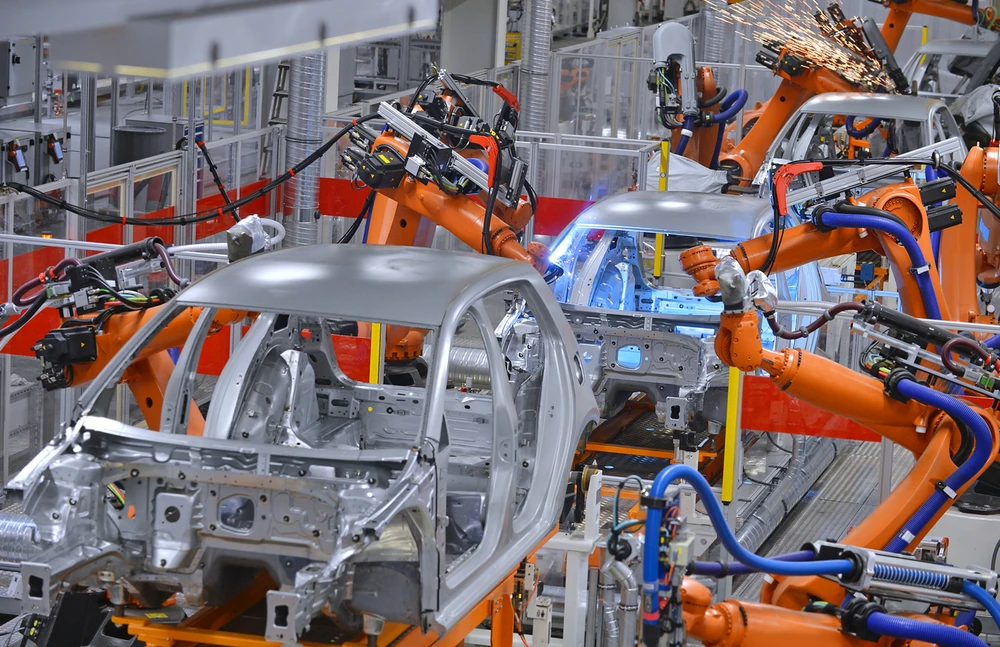Constraint-Based vs. Rules-Based Configuration: The Advantage for Complex Manufacturing
When configuring products with thousands of parts, variants, and customer-specific requirements, constraint-based configuration offers the flexibility, scalability, and resilience that rule-based configuration engines simply can’t match.

When configuring products with thousands of parts, variants, and customer-specific requirements, constraint-based configuration offers the flexibility, scalability, and resilience that rule-based configuration engines simply can’t match.
Unlike rule-based logic, which dictates a fixed path of if-then rules, constraint-based systems define what must be true for a configuration to work, no matter where the user starts. That means configure, price, quote (CPQ) systems with constraint-based engines are ideal for manufacturers who need to rapidly launch new products, support diverse markets and applications, and adapt to changing requirements without rewriting thousands of configuration rules.
What is constraint-based configuration?
Traditional rule-based configuration relies on rigid “if-then” statements to define how products can be built—for example, “If component A is selected, then component B must also be selected.” While this works for simple product lines, it breaks down quickly in complex scenarios. Imagine configuring a fluid system with thousands of bolts, washers, and nuts. For every valid or invalid combination, a separate rule must be written. This leads to massive rule sets that are time-consuming to build, difficult to maintain, and fragile in the face of change.
Constraint-based configuration takes a different approach. Instead of prescribing every allowable combination, it defines the conditions that must be true for a product configuration to be valid—regardless of the order in which selections are made. It focuses on relationships and dependencies, not fixed sequences. Users can begin with any input (like material, size, or environment), and the system automatically filters and adjusts the rest in real time to ensure compatibility.
For example, instead of writing dozens of rules to manage every nut, bolt, and washer combination, constraint-based logic might define a single rule: The bolt diameter must match the washer diameter, and both must be suitable for corrosive environments if specified. That single constraint applies broadly to reduce redundancy and simplify maintenance. This approach also allows manufacturers to define product relationships once and reuse them across product lines, customer segments, and global markets.
Constraint-based vs. rules-based configuration: a simple breakdown
Here’s how the two approaches stack up when it comes to supporting complex manufacturing workflows:
| Capability | Rule-based configuration | Constraint-based configuration |
| Maintenance effort | High (hard-coded, many-to-many) | Low (logic reused across SKUs) |
| New product onboarding | Slow and error-prone | Fast and scalable |
| Flexibility in user input | Rigid (forced paths) | Flexible (any input order) |
| Global/multi-market support | Difficult | Built-in with constraint layering |
| Coverage of product portfolio | Limited | Full (with fewer constraints) |
Why complex manufacturers choose constraint-based configuration
Constraint-based configuration changes the pace, scale, and confidence with which manufacturers operate. At Tacton, we’ve seen manufacturers across industries reduce quoting complexity when choosing constraint-based CPQ software.
As Marlande Wesselhoft, CIO at Vantage, put it: “We ultimately selected [a CPQ with] the constraints-based methodology, considering how complex our products are and the variety of products that we have. [The team] felt very confident that the constraint-based methodology would accelerate our timeline getting our products into the platform.” That confidence in scalability and speed is echoed across industries, from elevator systems to turbines and poultry housing.
At Siemens Energy, where every gas turbine is tailored to the customer’s power plant and site conditions, quoting used to take eight weeks and required deep engineering involvement. With more intuitive and accurate configuration, quoting takes five minutes. The product logic was maintained through thousands of business rules, making the system complex and costly to manage. After transitioning to a constraint-based approach, Siemens replaced those thousands of rules with just a few hundred constraints—dramatically simplifying system maintenance while improving accuracy and speed.
Husky, a global leader in injection molding systems, faced similar challenges in quoting for their hot runner business. Configurations required navigating 60–70 variables per product, using spreadsheets and look-up charts that often resulted in errors, rework, or missed opportunities. With a constraint-based engine, Husky reduced solution time by 75% and eliminated incorrect configurations altogether. Their quoting process now delivers 100% error-free quotes and has become a strategic differentiator.
Across these different industries, the impact is the same: constraint-based logic empowers manufacturers to move faster, quote smarter, and support a broader product portfolio without creating a maintenance slowdown.
The benefits constraint-based CPQ
Constraint-based CPQ transforms how manufacturers bring products to market. You get:
- Broader product portfolio coverage. Traditional systems, especially homegrown CPQ, often can’t scale beyond a subset of offerings. Constraint logic allows you to model and support up to 100% of your product range without exponential increases in rules.
- Faster onboarding and less tribal knowledge. Because the logic lives in the system—not in a senior engineer’s head—new hires can contribute faster, and sales reps don’t have to rely on specialists for every quote.
- Built-in adaptability for local markets. Apply specific constraints by geography, application, or regulation without duplicating configuration logic.
- Resilience during change. Adding a new product variant or retiring an obsolete component only requires a logic update—not a cascade of rewrites across thousands of rules.
- An intuitive experience for sellers and partners. Users don’t need to know the full product structure or follow a rigid process. Whether they start with the customer’s environment, preferred feature, or performance need, the system intelligently guides them to a valid solution. This makes configuration accessible for channel partners, distributors, and less technical teams.
- Future-ready architecture. Constraint-based systems are more adaptable to AI, guided selling, and optimization, making them ideal foundations for long-term digital transformation.
This approach also supports configure-to-order (CTO) and engineer-to-order (ETO) workflows, which demand advanced compatibility logic and customization.
Many leading manufacturers choose a constraint-based CPQ like Tacton for this reason: it lets them stay agile, scale globally, and serve customers without compromise.
Evaluating your current configuration approach
If you’re unsure whether your current system is holding you back, ask yourself these questions:
- Are we writing hundreds (or thousands) of rules per product line?
- Does every product update require developer intervention?
- Do users complain that configuration is too rigid or confusing? Is the configuration experience flexible, or does it force users into a rigid sequence?
- Are we able to cover our full product portfolio, or are we limited to a subset due to system complexity?
- How often do we need developer or IT intervention to update logic or fix configuration errors?
- Is our system slowing down quoting, product launches, or onboarding?
If the answer to any of these is yes, it’s time to rethink your configuration strategy.
Future-proof your configuration strategy
For manufacturers managing high product complexity, global reach, or customization requirements, constraint-based configuration is the best logic for manufacturing built to scale.
Tacton’s constraint-based CPQ software gives you a faster, more flexible, and more future-ready way to sell and deliver complex products. Download our full guide to constraint-based configuration to discover how it can future-proof your product configuration. Or, reach out to see it in action.



